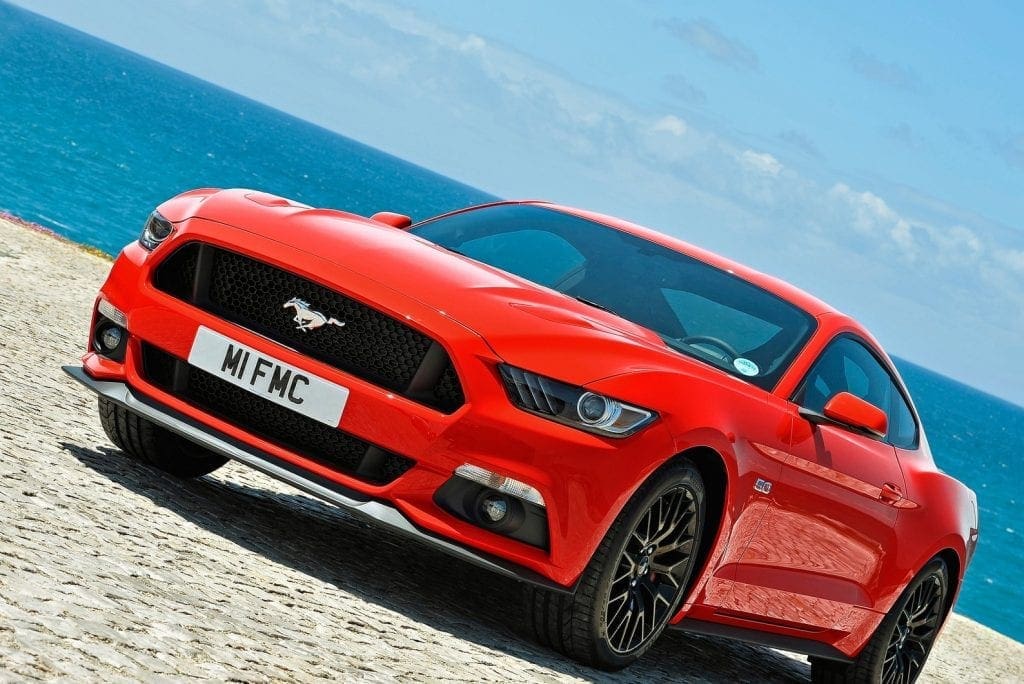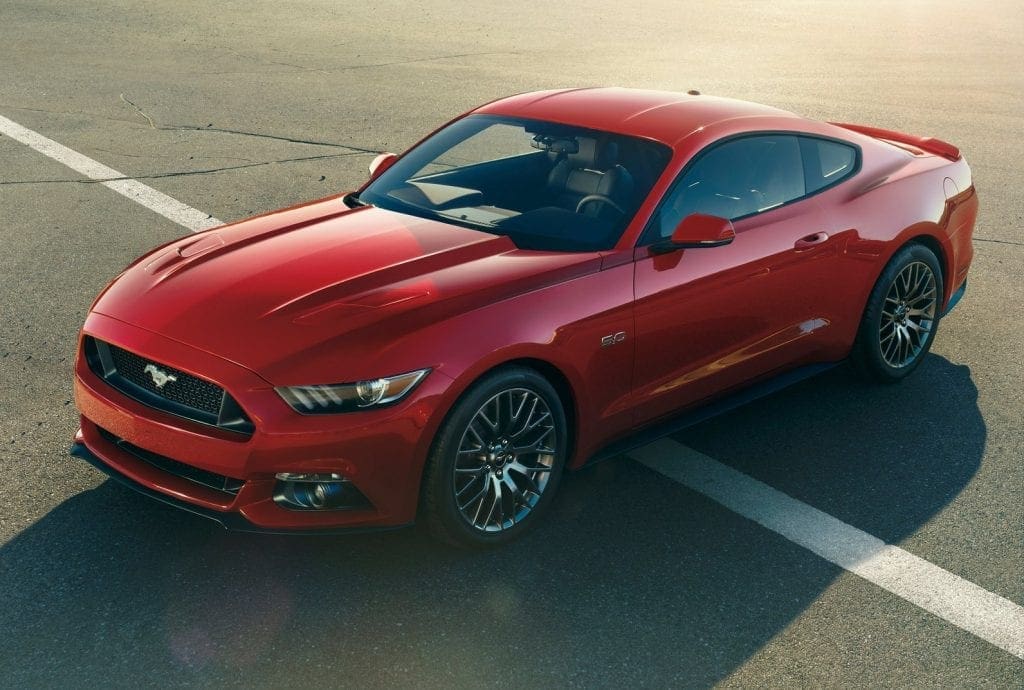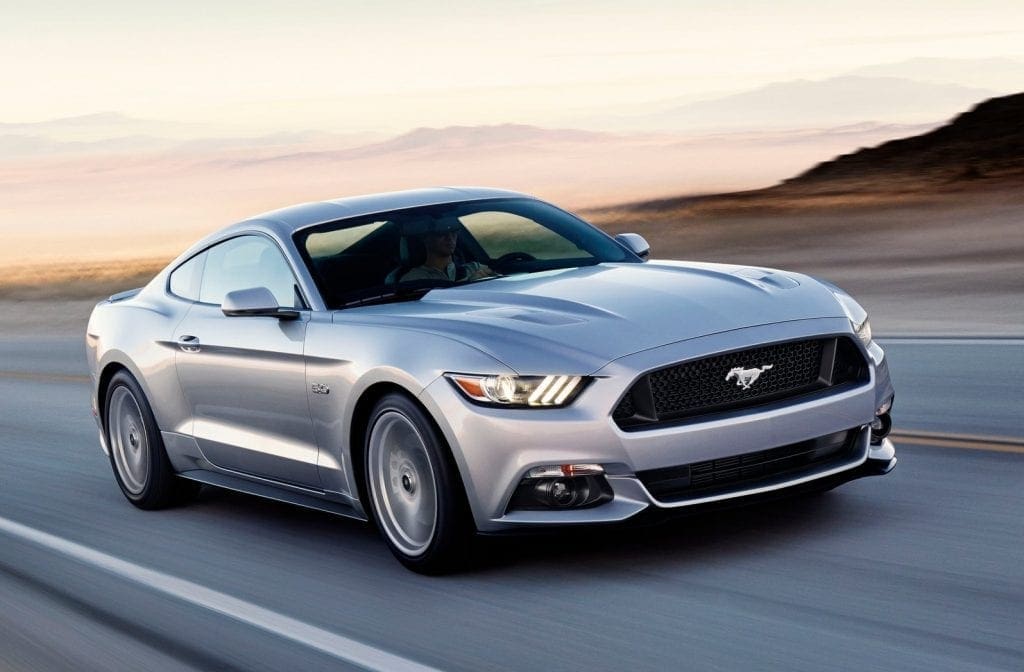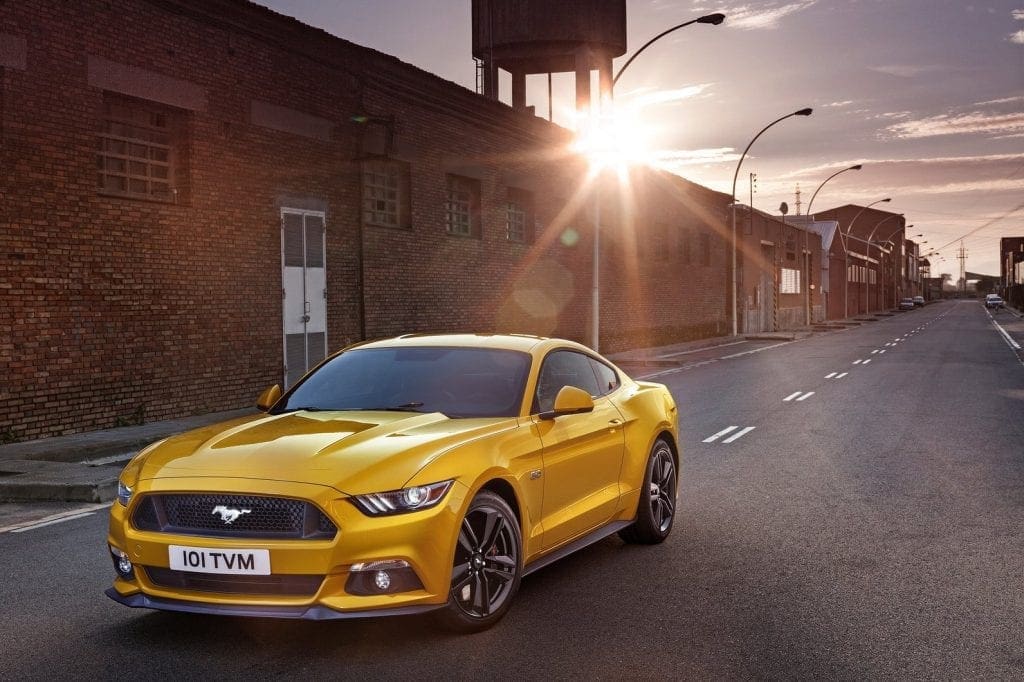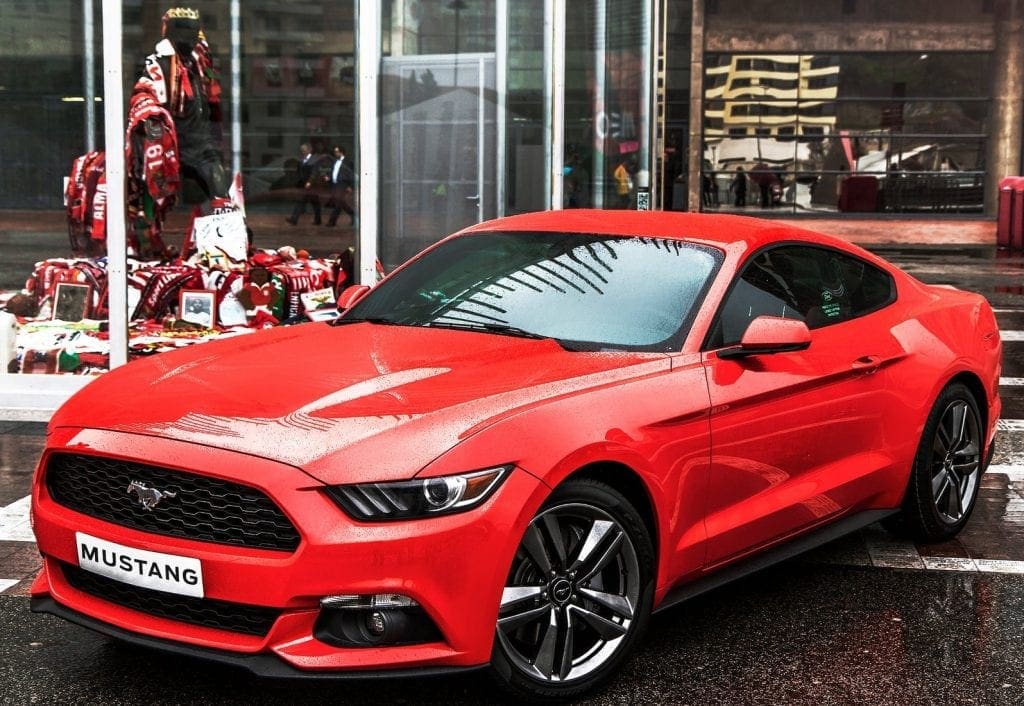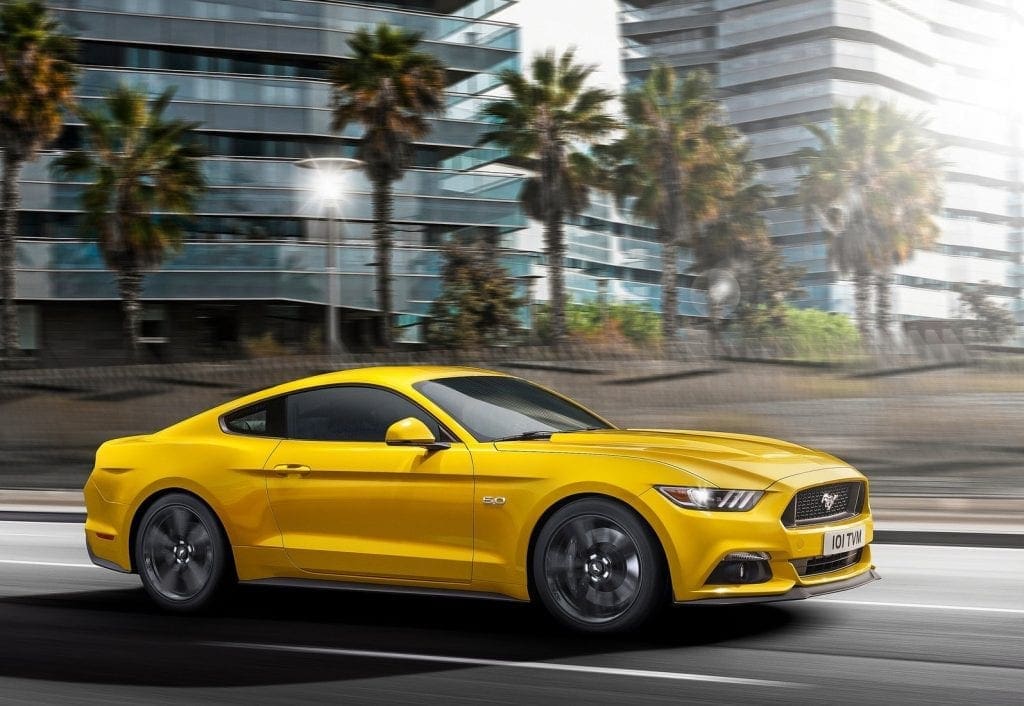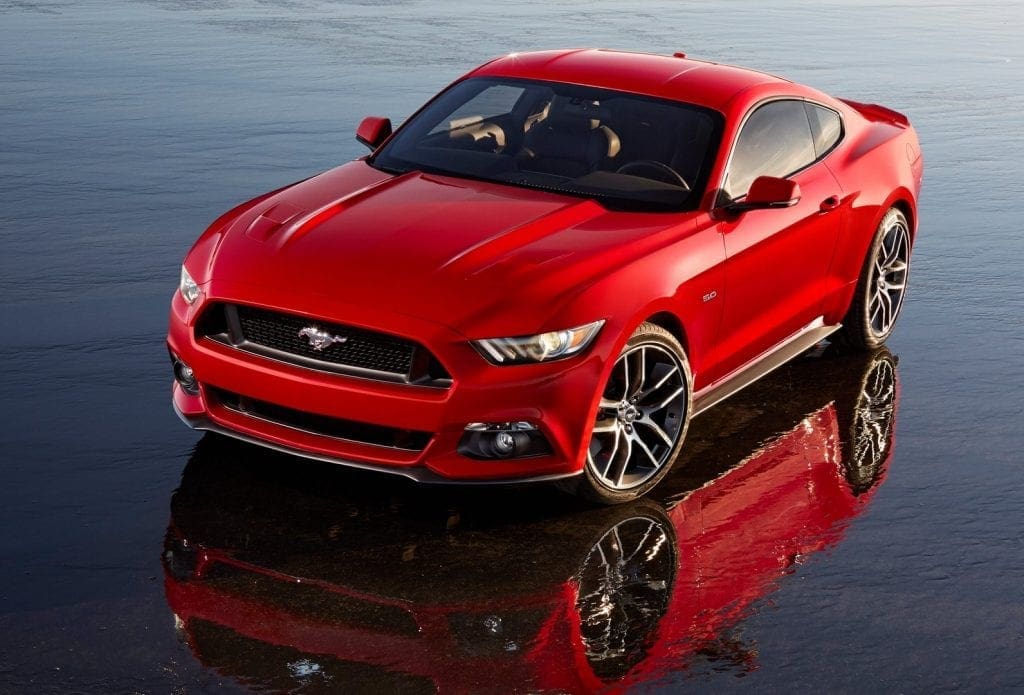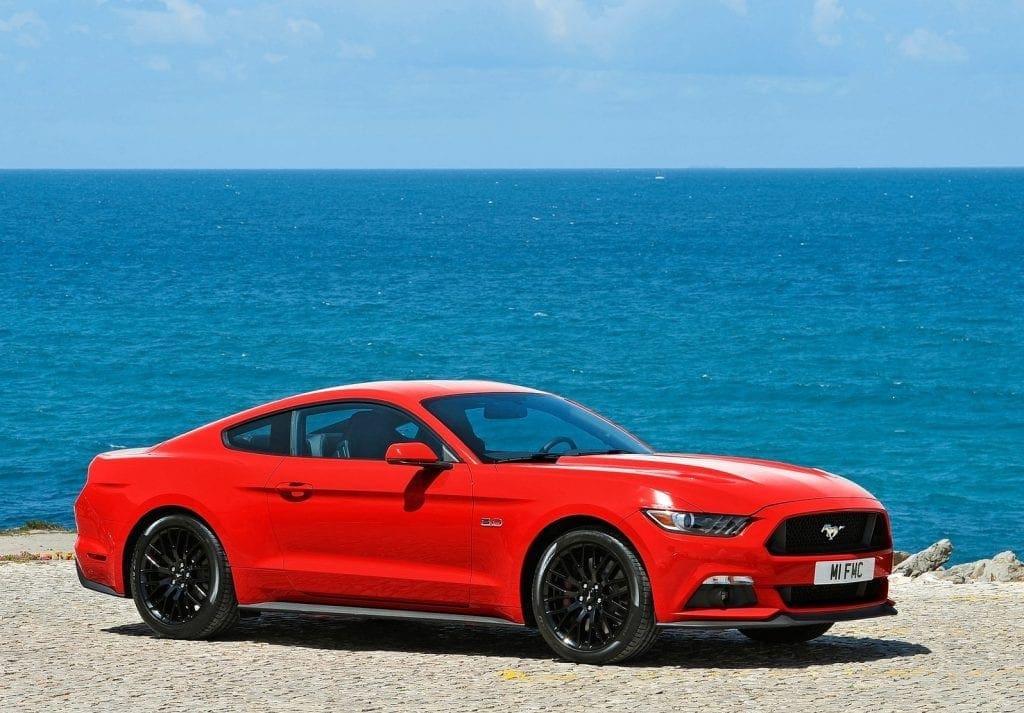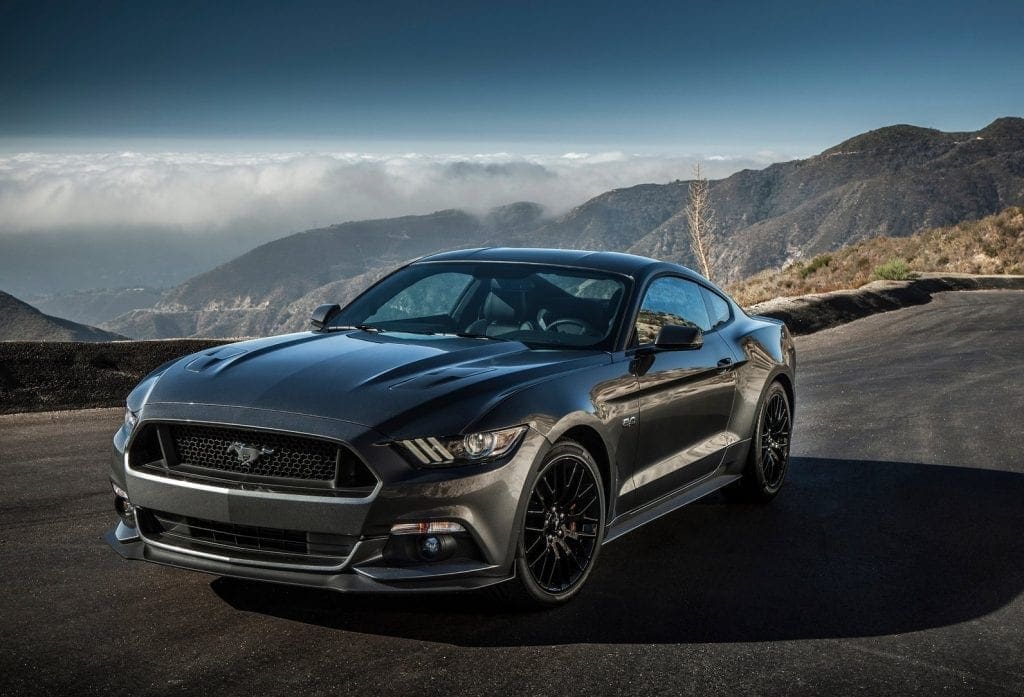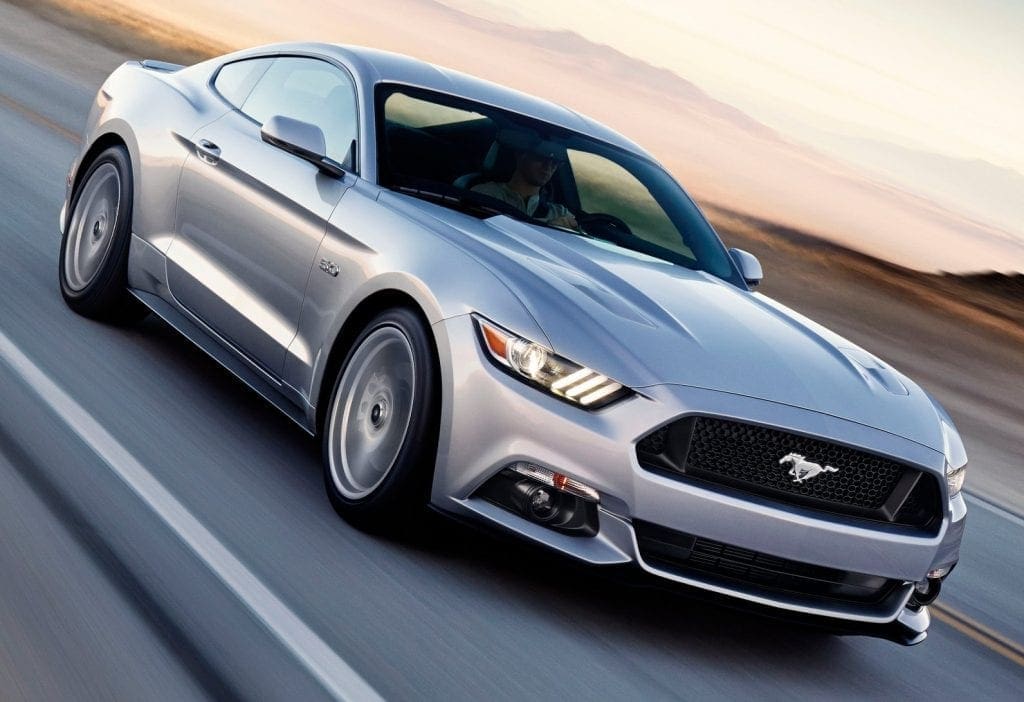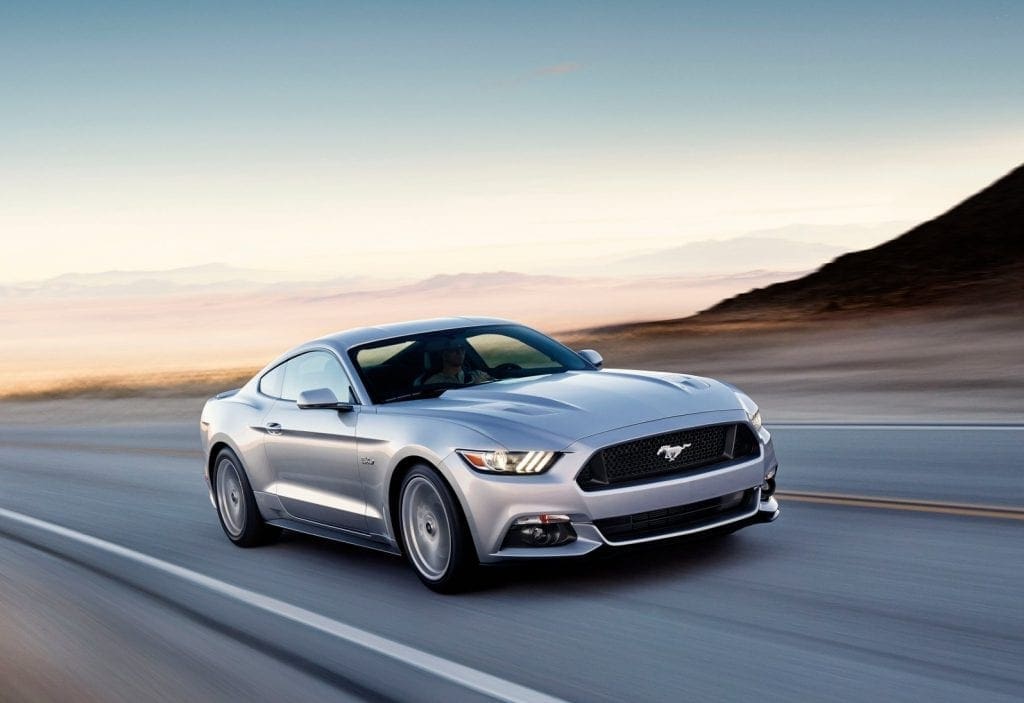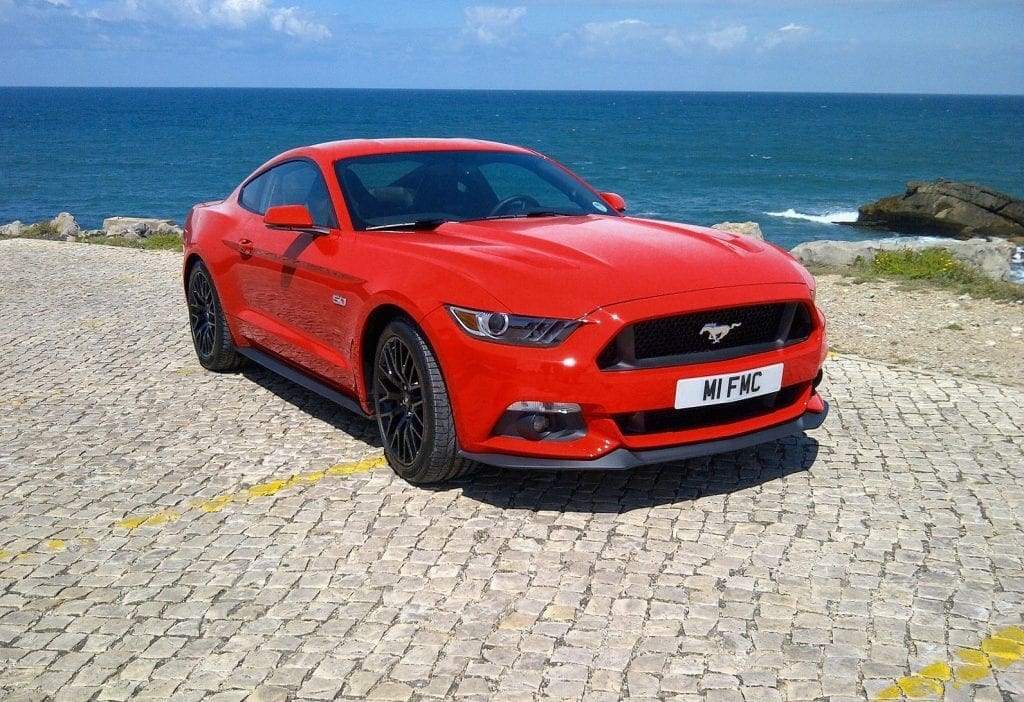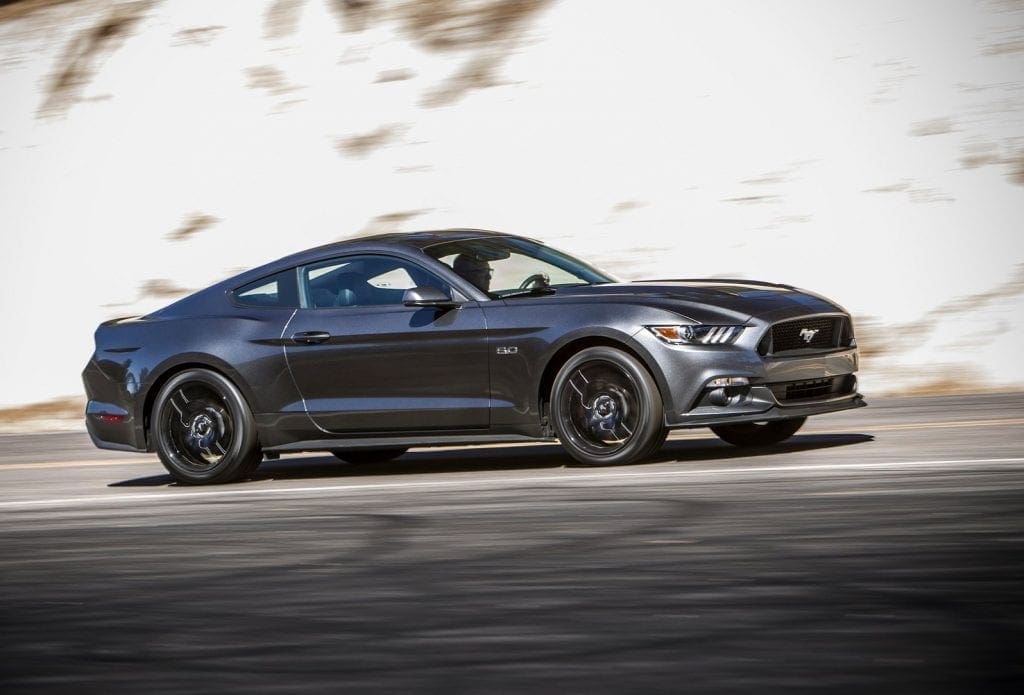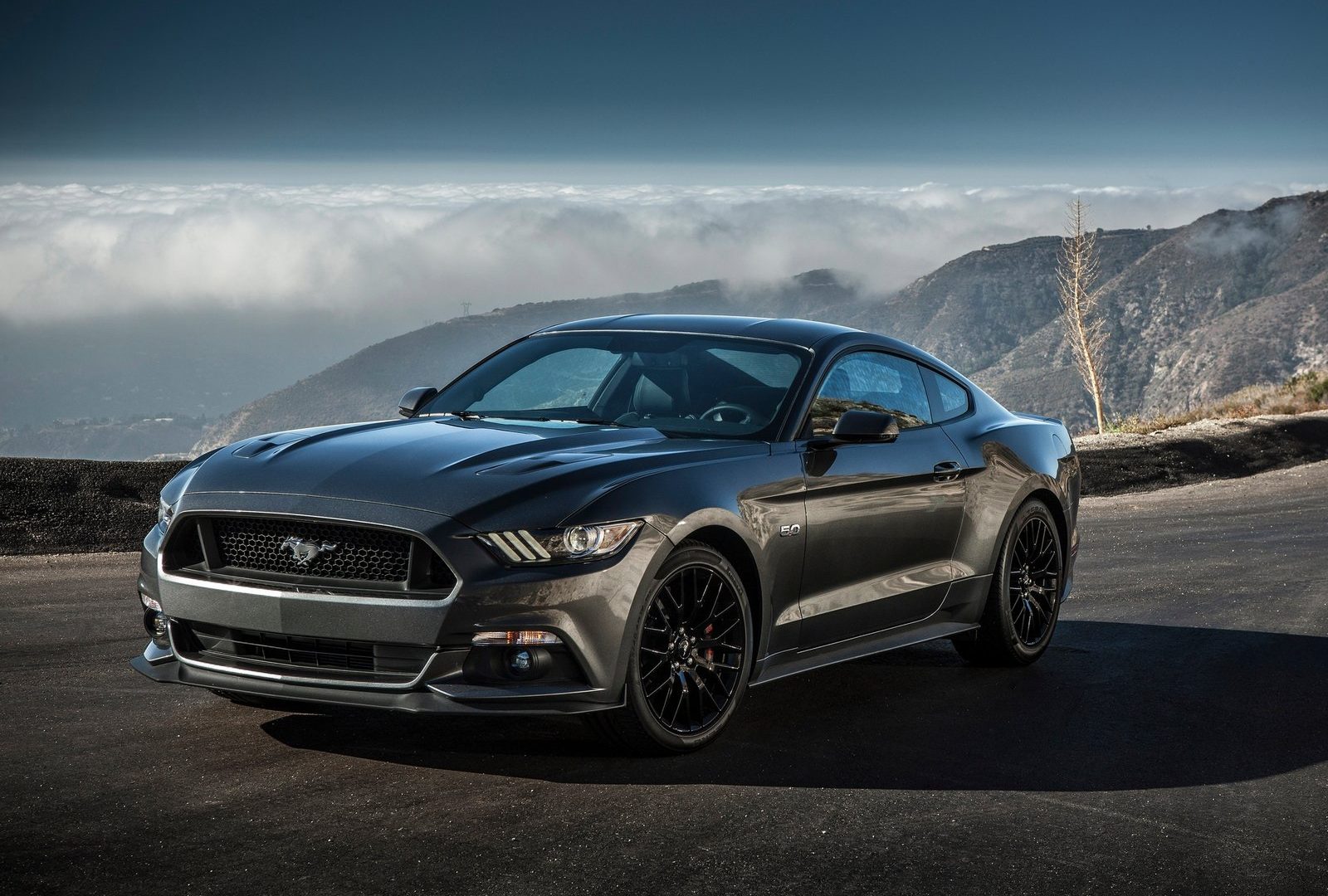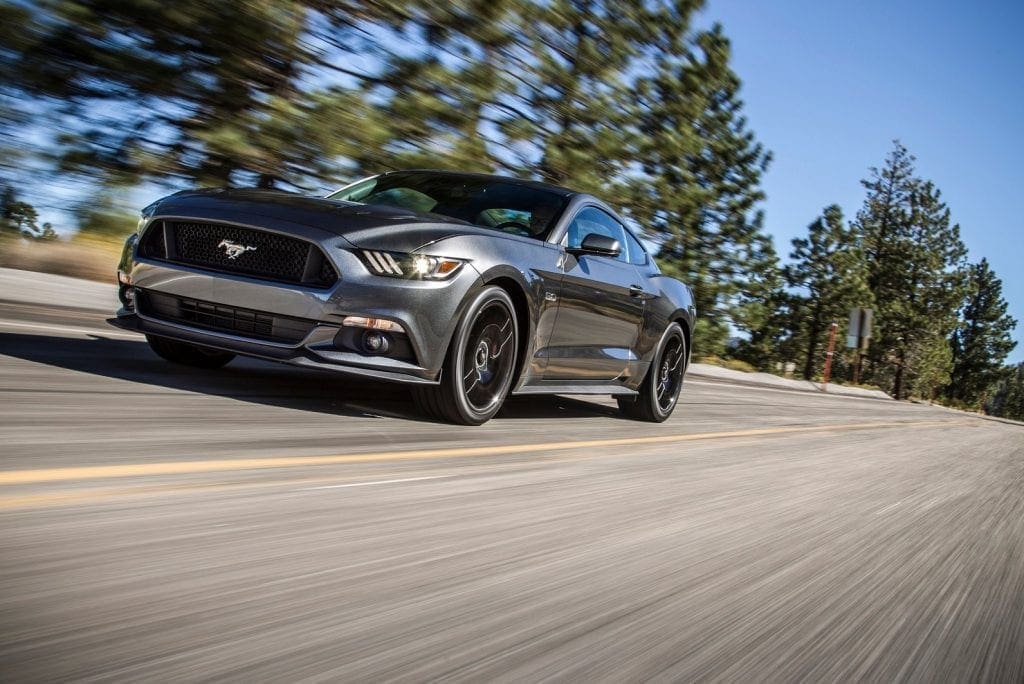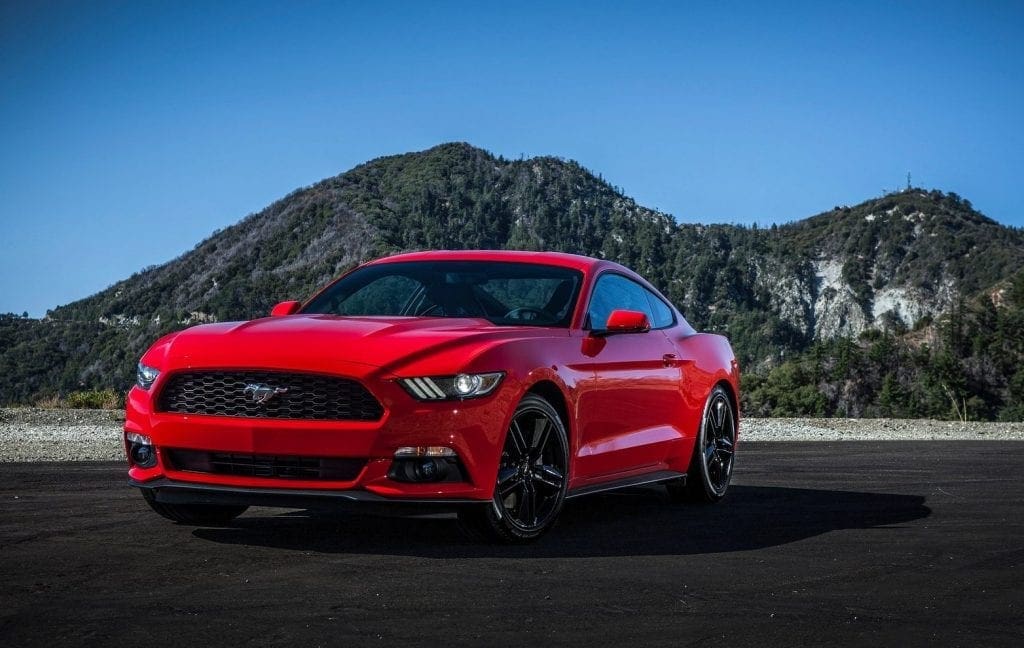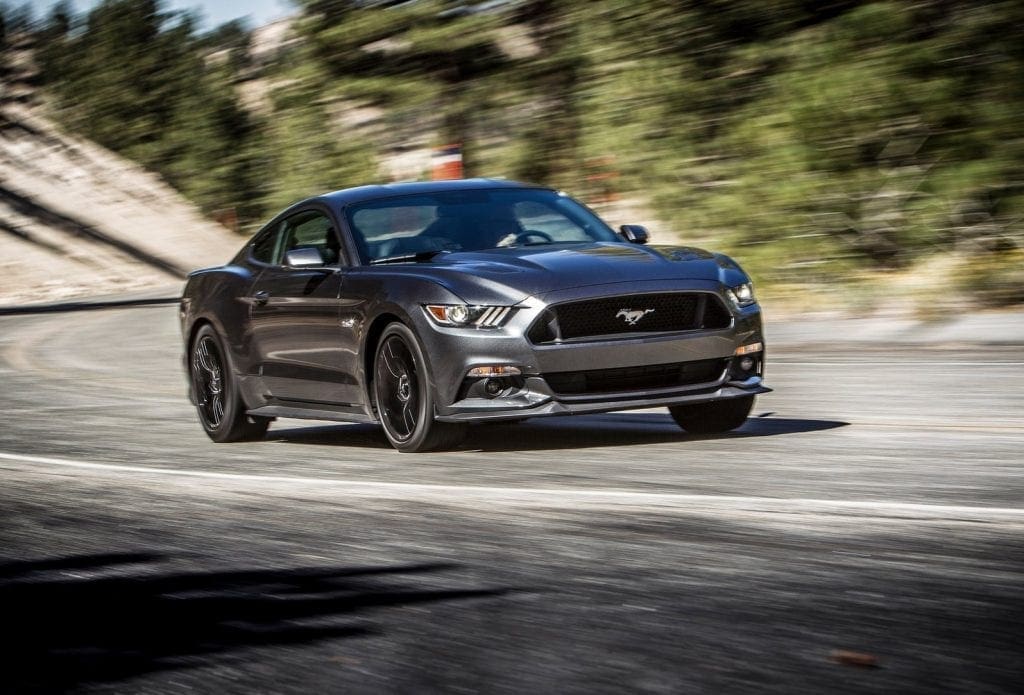2015 Ford Mustang GT
The GT gets the same clean-sheet design updates like the rest of the 2015 range. The fastback and convertible body styles bring us back to the beginning and still manage to look modern and contemporary. The GT is lower and has a wider stance with a reduction in roof height, and wider rear fenders and track.
Our pick is the fastback with the sleeker profile enabled by more steeply sloped windshield and rear glass. At the back the three-dimensional, tri-bar taillamps with sequential turn signals looks awesome. Separating the tail lights is a glossy black plastic panel with either a running horse emblem or a round GT medallion on GT models. The front has a contemporary execution of the signature shark-bite front fascia and trapezoidal grille.
The latest edition of the throaty 5.0-liter V8 is back to power the GT. The good news is that the base engine was always a great power unit and for 2015 it got a number of tasty upgrade. Power is 420 horsepower and there is a healthy 390 lb/ft of torque on tap.
Upgrades include a rebalanced forged steel crankshaft and sinter forged connecting rods that are lighter and more durable to support higher-rpm operation with less vibration. This revised crankshaft is need in order to withstand the riggers of the 7,000 rpm redline that is possible thanks to new cylinder heads, valvetrain and intake manifold that allows this stunning V-8 to breath more freely from idle all he way up t redline.
Straighter intake ports in the cylinder head improve air flow while larger intake and exhaust valves allow more air into and out of the cylinders for more power. To take advantage of the larger valves both the intake and exhaust camshafts were revised and stiffer valve springs added to ensure that the valves close completely at high rpm. The combustion chamber was also modified along with redesigned piston tops with deeper cutouts to accommodate the larger valves were also thrown in. Engineers also played with the variable camshaft timing on the intake side allowing a greater range of adjustment. This change optimizes valve timing over a greater range of rpm and primarily improves both emissions and fuel economy making the big bad V-8 a little more environmentally friendly; that is until of light up the tires for a smokey burnout.
The new intake manifold features charge motion control valve plates that partially close off port flow at lower engine speeds. When the ports are partially closed this causes the air charge to tumble and swirl allowing the fuel and air to better mix. This improved mixture burns more efficiently in the combustion chamber resulting in better idle stability, fuel economy and lower emissions; all good things.
The manual is smoother and shifts from the updated manual gearbox feel more tight. The Getrag manual has a new shift linkage design for shorter throws and improved precision. The shift lever is now positioned closer to the driver and away from the cup-holders so the driver has a clear path for shifting. The reworked automatic transmission features new steering wheel-mounted shift paddles for drivers who want the choice between convenience and control. Internally clutches have been optimized and operating temperature has been increased to reduce friction. The output shaft is now supported by a ball-bearing that enables a top speed of 155 mph for Mustang GT.
Most exciting for GT owners is the all-new front and rear suspension systems. At the front, a new perimeter subframe helps to stiffen the structure while reducing mass, providing a better foundation for more predictable wheel control that benefits handling, steering and ride. The new double-ball-joint front MacPherson strut system also enables the use of larger, more powerful brakes. This is expected to be the best stopping Mustang yet, with three available brake packages.
At the rear is an all-new integral-link independent rear suspension. The geometry, springs, dampers and bushings all have been specifically modified and tuned for this high-performance application. New aluminum rear knuckles help reduce unsprung mass for improved ride and handling.
On the inside the GT gets a lot of significant amount of innovative technologies providing drivers with enhanced information, control and connectivity when they want it. From Intelligent Access with push-button start to SYNC and MyKey in every Mustang built, plus available Track Apps, MyColor gauges and new Shaker Pro audio system, drivers will be able to customize their time behind the wheel.
On a twisty back road or a weekend track day, the driver can tap the toggle switches on the console to quickly adjust steering effort, engine response, and transmission and electronic stability control settings using the available Selectable Drive Modes to create the perfect Mustang at any time.
The advanced new Ford-developed stability control system is tuned to maximize Mustang’s dynamic capabilities. When the time comes to turn up the wick at the track, Ford Mustang GT includes standard launch control that enables drivers to achieve smooth, consistent starts every time. When it’s time to back off and relax for the drive home, available advanced driver-assist features including Blind Spot Information System with cross-traffic alert and adaptive cruise control can help ease the load, while SYNC AppLink™ lets drivers control their smartphone apps to listen to their favorite form of entertainment.
Specs & Performance
| type | Series Production Car |
| built at | Flat Rock, Michigan, USA |
| price £/td> | £34000 |
| engine | V8 |
| position | Front, Longitudinal |
| aspiration | Natural |
| ignition | Coil-on-Plug |
| block material | Aluminum |
| valvetrain | DOHC 4 Valves per Cyl |
| fuel feed | Sequential Multiport Electronic |
| displacement | 4951 cc / 302.13 in³ |
| bore | 92.2 mm / 3.63 in |
| stroke | 92.7 mm / 3.65 in |
| compression | 11.0:1 |
| power | 313 kw / 419.7 bhp @ 6000 rpm |
| specific output | 84.77 bhp per litre |
| bhp/weight | 250.12 bhp per tonne |
| torque | 529 nm / 390.2 ft lbs @ 4250 rpm |
| front tires | F-255/40 R-275/40 R19 |
| rear tires | F-255/40 R-275/40 R19 |
| front brakes | Discs w/Brembo 6-Piston Calipers |
| f brake size | 34 x 380 mm / 1.34 x 14.96 in |
| rear brakes | Discs w/Single Calipers |
| r brake size | 25 x 330 mm / 0.98 x 12.99 in |
| front wheels | F 48.3 x 22.9 cm / 19 x 9 in |
| rear wheels | R 48.3 x 24.1 cm / 19 x 9.5 in |
| steering | Rack & Pinion |
| f suspension | MacPherson Struts |
| r suspension | Integral-link Independent |
| curb weight | 1678 kg / 3700 lbs |
| wheelbase | 2720 mm / 107.1 in |
| front track | 1570 mm / 61.8 in |
| rear track | 1637 mm / 64.4 in |
| length | 4784 mm / 188.3 in |
| width | 1916 mm / 75.4 in |
| height | 1381 mm / 54.4 in |
| transmission | 6-Speed Manual |
| gear ratios | 3.657:1, 2.430:1, 1.686:1, 1.315:1, 1.00:1, 0.65:1 |
| final drive | 3.55:1 |
| top speed | ~249.40 kph / 155 mph |
| 0 – 60 mph | ~4.4 seconds |
Pictures
